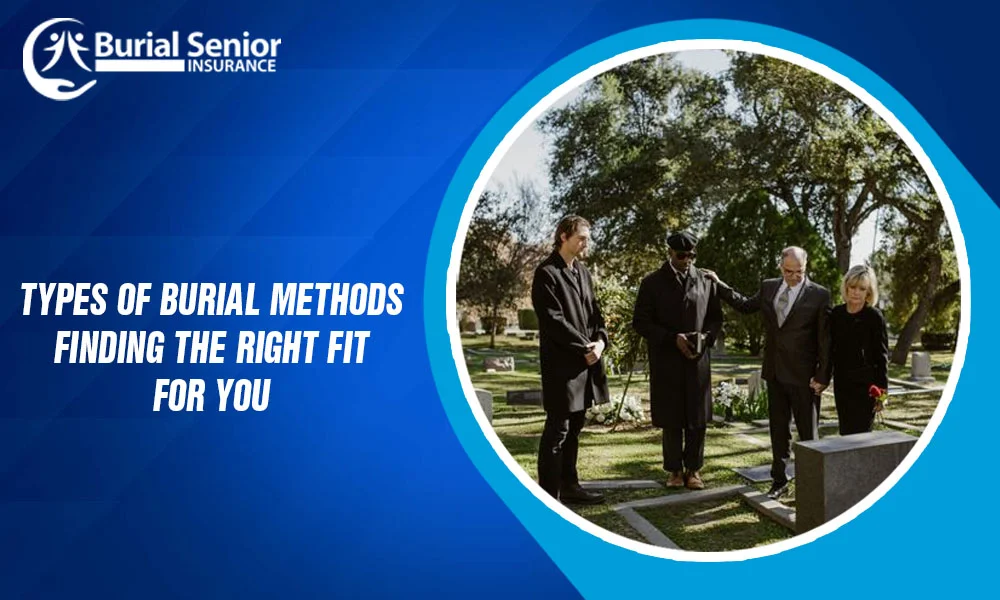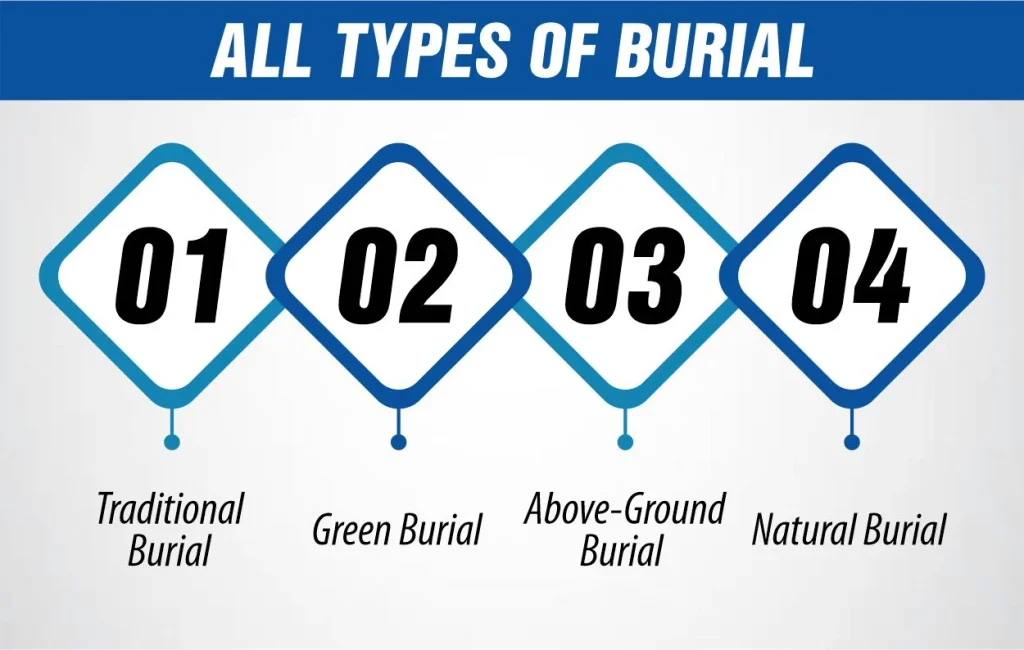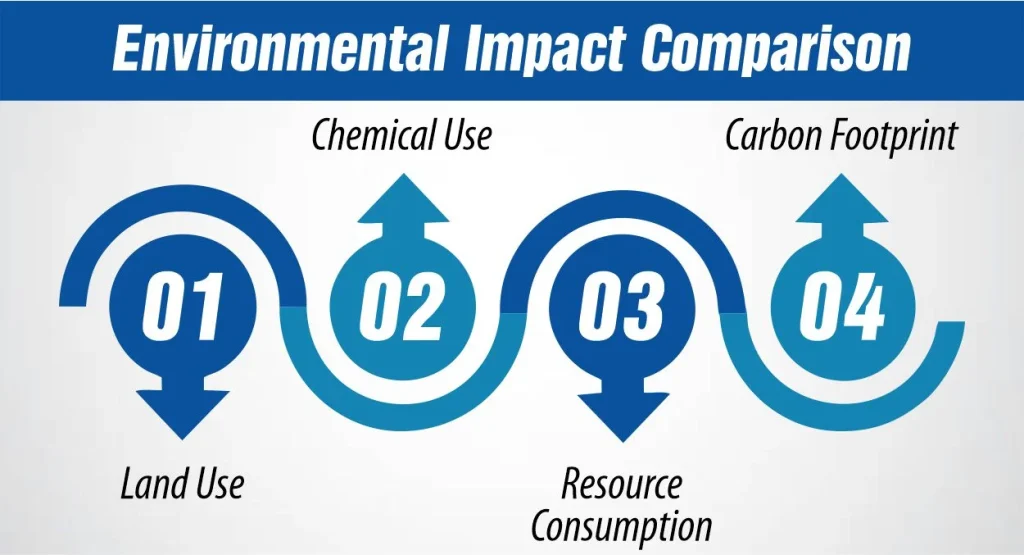Last Updated on: May 16, 2024
Reviewed by Kyle Wilson

Have you ever wondered how the final farewell differs around the world? Choosing how we say goodbye is as personal as the life lived. Whether it’s a traditional graveside service, a green ceremony under the open sky, an above-ground entombment, or a natural return to the earth, each burial type has its unique customs and significance. What types of burial resonates most with you? Let’s explore the various options better to understand these final acts of love and respect.
Customized Options Await
When it comes to laying our loved ones to rest, there are several types of burial options to consider, each with its unique approach and traditions. Here’s a breakdown on different types of burials:
These types of burial offer a different way to honor a life, and the choice deeply depends on personal, cultural, or ecological values. Whether you lean towards tradition or eco-friendliness, there’s a respectful option available.

When we consider types of burial, it’s now not pretty much pronouncing goodbye to loved ones. It’s about how one-of-a-kind cultures and instances have formed the way we honor the lifeless. Let’s dive into how traditional, inexperienced, above-floor, and herbal burials range across numerous cultural landscapes and ancient moments.
In the Types of burial the traditional burial is what most folks imagine: a casket, a cemetery, and a concrete grave marker. Rooted in long standing customs, it is customary in many Western societies. This technique entails embalming the frame, which preserves it for the funeral service and beyond. It’s approximately keeping a lasting memorial that a circle of relatives and friends can go to. Historically, this technique reflects a deep recognition of the physical stays and often aligns with religious ideals about the afterlife.
The inexperienced burial method is making a return, attractive to folks who need to go away with a lighter footprint on Earth. This isn’t always a brand new age fashion, but a return to antique ways earlier than contemporary embalming chemical compounds and metallic caskets became the norm. In an inexperienced burial, the frame is positioned immediately into the earth, allowing it to decompose certainly. The use of biodegradable coffins or shrouds and the absence of a concrete vault facilitates lessening the environmental effects. These Types of burial method is visible in diverse indigenous cultures and are gaining traction globally as more people are looking for sustainable options.
In some cultures, particularly wherein the area is at a premium or the floor is too rocky for digging, above-floor burials are commonplace. This method includes entombing the frame in a mausoleum or crypt, which can be extra accessible for visitation and upkeep. It’s especially famous in urban centres of Europe and positive elements of America, like New Orleans, wherein high water tables make traditional burials impractical. Above-floor burials can also be seen in ancient contexts, such as in historic Egypt, where enormous tombs were built to honour the pharaohs.
Natural burials take the concept of inexperienced burials similarly by way of making sure the burial web site remains as untouched as feasible. The intention is to permit the deceased to end up as part of the panorama without disturbing the habitat. There are not any everlasting markers, and native vegetation may also mark the spot alternatively. This method is deeply rooted in lots of indigenous practices around the sector, wherein a non-secular reference to the land and a notion of the cyclical nature of life and loss of life are established. Natural burial grounds at the moment are emerging throughout one of a kind countries, catering to folks that want for their very last resting region to gain the atmosphere.
The way we bury our dead says a whole lot about our values and beliefs. In Japan, for instance, cremation followed by interment in a circle of relatives’ graves is commonplace, reflecting space constraints and cultural practices around ancestor veneration. In contrast, Tibetan sky burials, wherein the frame is left on mountaintops for vultures, display a perception of offering the frame returned to nature.
Throughout history, burial practices have also been stimulated by using era, geography, and public health. For example, in the course of the Victorian generation, complicated mourning rituals and ornate caskets contemplated societal attitudes towards demise and the afterlife.
Today, the selection from types of burial methods is regularly prompted by way of personal and environmental values. As the arena becomes extra ecologically aware, green and herbal burials are seeing a resurgence, while traditional and above-floor techniques stay famous for their permanence and cultural significance.
Choosing in Types of burial method is a deeply private decision; however, additionally a reflection of broader cultural and historical developments. Whether it’s a traditional burial with its solemn rituals, a green burial that honours environmental ethics, an above-ground burial dictated by way of geographical necessity, or a herbal burial that offers a peaceful go back to the earth, every technique provides a unique way to commemorate lives in a way that resonates with private beliefs and cultural history.
The traditional burial typically entails some key steps: embalming, a casket, and a burial plot with a headstone. This technique has deep roots in lots of cultures and is regularly selected for its sense of permanence and dignity. Families recognize having a chosen area to visit and recollect their cherished ones. Historically, this method aligns with spiritual and societal norms about honoring the dead, imparting a space for communal mourning and reflection.
While traditional burials keep vast costs, they aren’t the only manner. Concerns about land use, environmental effects, and fee pressure make them look for alternatives. More human beings are now searching for other Types of burial that mirror a non-public connection to nature or a choice for simplicity.
Green burial strips returned the layers of present-day burial practices by getting rid of embalming chemical compounds and using biodegradable materials. The frame is lowered back to the earth to decompose evidently, which considerably reduces the environmental footprint. For people who live eco-conscious lives, it’s a way to make sure their very last act is equally considerate.
Cremation has ended up being a popular alternative, partially due to its decreased cost and versatility. The ashes may be kept in an urn, scattered in a meaningful area, or maybe integrated into objects like tree planters, allowing for an enduring tribute in diverse paperwork. This method appeals to people who will need a more robust attachment to conventional rituals or those searching out an extra cell memorial.
Also referred to as alkaline hydrolysis, aquamation makes use of water and lye to break down the frame, leaving in the back of most effective bones, which might be then crushed into ash. This method is touted as greater eco-friendly than cremation since it uses much less strength and releases no emissions. It’s a thoughtful choice for individuals who are searching for a gentle go back to the elements.
In some cultures, inclusive of Tibetans, sky burials expose the body to the elements and animals, in reality returning it to nature. Similarly, donating a body to technology allows for a contribution to clinical studies, assisting in educating future doctors and keeping lives. Both alternative Types of burial offer a manner to make a significant effect after loss of life.
Deciding on a types of burial approach is deeply personal. It is approximately adhering to lifestyle, making an eco-friendly choice, or coping with realistic subjects like cost and area. What’s vital is that the choice displays the values and desires of the deceased and their families.
As we evolve, our method of dying and memorialization evolves, too. From the solemnity of traditional burials to the thoughtful simplicity of inexperienced burials, the huge variety of available techniques allows individuals to pick out a farewell that honestly reflects their lifestyles and values. Whether sticking with tradition or choosing an alternative, the intention is identical: to honor lifestyles well-lived in a manner that feels proper to those left behind.
Engaging with those selections isn’t pretty much making plans for a cease; it’s about information and celebrating lifestyles’s journey. Each method offers its way of saying goodbye, ensuring that every farewell is as specific because of the character it honors.

Deciding on a types of burial method is deeply personal and often reflects your values, environmental concerns, and how you wish to be remembered. Here’s a quick guide to help you consider your options:
Each option has its unique aspects and benefits, aligning with different personal and familial preferences.
In the end, the choice of burial is a reflection of personal beliefs, cultural heritage, and individual preferences. Whether you lean towards the timeless tradition of a traditional burial, the eco-conscious embrace of a green burial, the architectural dignity of an above-ground placement, or the natural simplicity of a natural burial, each offers a unique way to honor a life well-lived. Which types of burial speak to your spirit, and how do you envision your final mark on the world?
Here is our expert author, Kyle, your go-to source for simplified insights into the world of life insurance. With years of industry experience, Kyle delivers concise and approachable content, ensuring you navigate the complexities with confidence.

Burial Senior Insurance provides information and services related to burial insurance for senior citizens, including policy options and end-of-life support services.
Copyright © Burial Senior Insurance 2024. All Right Reserved.

Get Free Life Insurance Quotes